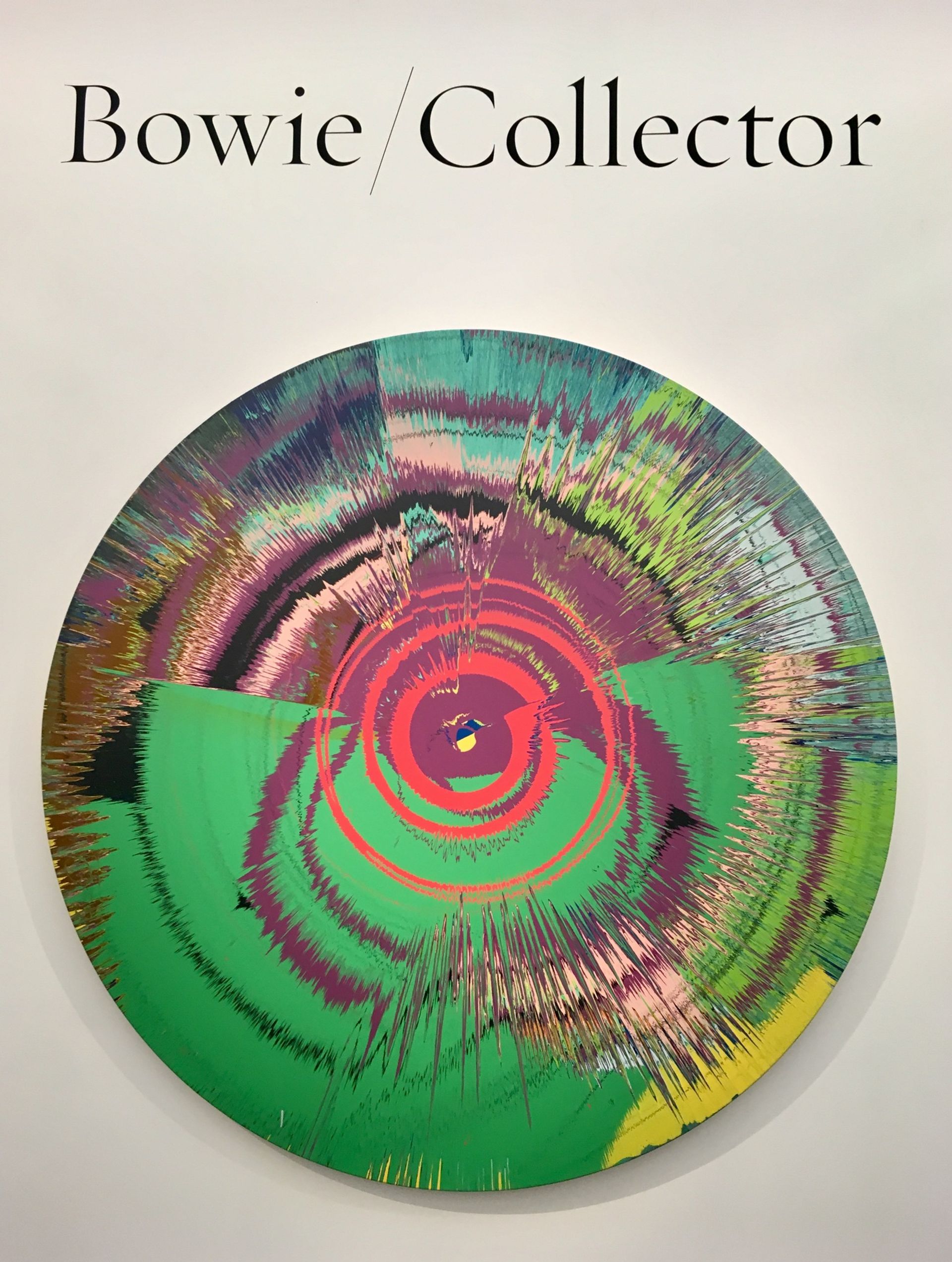David Bowie’s 1971 visit to Andy Warhol’s Factory may not have been a wild success, but it’s no secret that he had a keen interest in visual art and close connections with artists. This was made especially manifest from the early 1990s when the Thin White Duke became a conspicuous contemporary art world presence, sitting on the board of Modern Painters magazine and befriending and interviewing the likes of Tracey Emin, Damien Hirst, as well as John Bellany and Balthus.

In 1995, the same year that he schlepped over to Brixton to make a spin painting with his new mate Hirst, Bowie even had a Cork Street show of his own works, titled New Afro/Pagan and Work: 1975-1995. The exhibition included portrait paintings, chrome-painted African-style heads and printed wallpaper featuring repeated mini-Lucien Freuds floating in Hirst-style vitrines.
The Hirst and Bowie spin collaboration, Beautiful, hallo, space-boy painting (1995), is now conspicuously on display among the 500 works from the late, great man’s collection, which have just been unveiled at Sotheby’s prior to going under the hammer on 10 and 11 November. (Thankfully Mr. B’s own works are nowhere to be seen.)
Bowie/Collector: the Personal Art Collection of David Bowie fills eight of Sotheby’s Bond Street galleries but only constitutes around half of Bowie’s overall holdings. The rest of which are being retained by his family. According to Beth Greenacre, who has been the curator of Bowie’s collection since 2000, the family’s process of selection for the sale was made on the basis of “what to keep, rather than what to sell.”

But perhaps Bowie’s little floating Freuds were a something of a clue, as one of the great surprises—for me at least—is that while he was busily immersing himself in the world of 1990s Brit art, Bowie was also voraciously collecting rather sober works by many of the more obscure historical figures of Modern British art. There are no Freuds on show at Sotheby’s, but an abundance of pieces by less prominent figures. These include landscapes and a flower painting by Cedric Morris; figurative sculptures by F. E. McWilliam; landscapes by William Bomberg; and many of the St Ives artists, most notably Peter Lanyon and Wilhelmina Barns-Graham. “He was a passionate collector and he was also a postwar child, growing up the 1950s,” Greenacre says. She adds that Bowie was attracted to artists “who were creating a new visual landscape and breaking with the past—he was an astonishing historian, he read history books all the time.” Maybe as a result of Bowie/Collector he will be doing a little bit of posthumous re-writing of art history, too.


